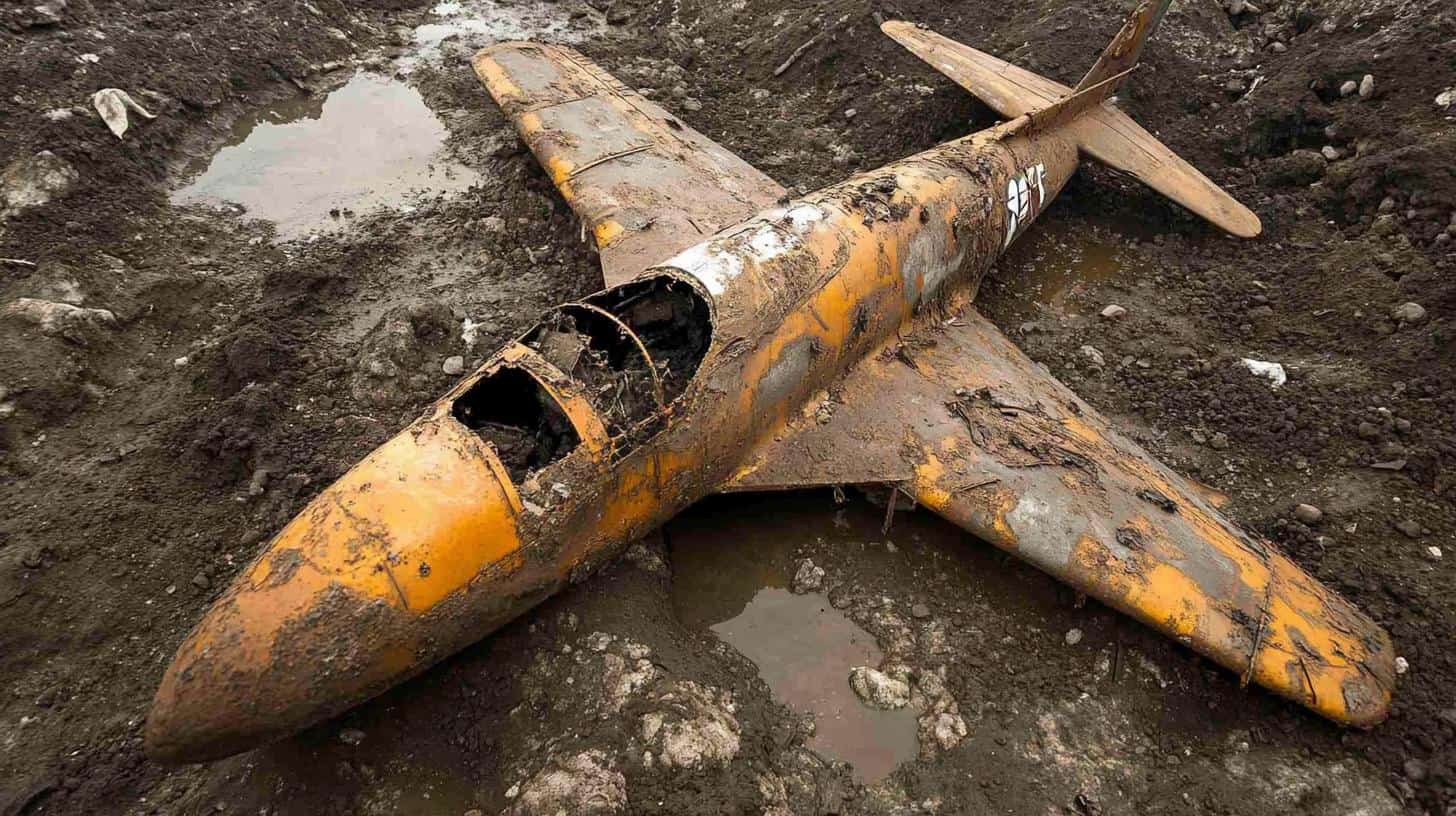In a recent historical discovery, the remains of a WWII-era Messerschmitt Me 109 fighter plane were lifted from their resting place near Vámosszabadi, Hungary. The main attraction, a Daimler-Benz DB 605 engine, emerged from beneath the earth, three and a half meters down, thanks to the combined efforts of local historians and military archaeologists. This discovery adds a new chapter to the aircraft’s storied past.
Led by Ensign Károly Magó of the Kiss József 86th Helicopter Brigade, the excavation was set in motion after local historian Ervin Alasztics pinpointed the crash site. The initial magnetometer survey confirmed the buried presence of the engine. On October 14, a planned operation enabled its recovery using heavy equipment, revealing the engine to be in surprisingly good condition, despite its sojourn in the swampy grounds.
This particular Me 109 had met its end on December 6, 1944, during a dramatic aerial skirmish. After a mission by American B-24 bombers was diverted by weather, a fierce encounter with German fighters ensued. Amidst the chaos, three Messerschmitts plummeted, including this one, into an oxbow lake near Vámosszabadi, only now resurfacing after decades in the mud.
Additional artifacts discovered in the excavation included fragments of the aircraft’s structure, offering insights into its final moments. Following its exhibition in Vámosszabadi, the wreckage will join the central collection in Szolnok for further analysis and preservation, ensuring that this relic of aviation history remains accessible for future generations.
New Insights Into WWII Aviation Discoveries Impacting Modern Understanding
A lesser-known aspect of historic WWII-era aircraft recoveries, such as the recent unearthing of a Messerschmitt Me 109 near Vámosszabadi, Hungary, lies in its broader implications on modern communities and historical scholarship. Beyond the immediate excitement of the discovery, these finds carry significant educational and cultural benefits for communities and countries involved.
Historical Context and Education
The discovery of such artifacts allows for a more tangible connection to the past. Schools and educational institutions often leverage these findings to enhance history curricula, providing students with real-world connections to the events they study. Exhibitions showcasing such relics attract researchers and enthusiasts alike, promoting further study and understanding of historical aviation and its technological advancements.
Cultural Heritage and Tourism
This find also boosts cultural heritage tourism, a growing sector in many regions. Hungary, for example, benefits from increased visitation to heritage sites and museums like the one in Szolnok, hosting the Me 109 wreckage for public exhibition. The influx of tourists contributes to local economies, creating jobs in hospitality and services.
Insight Into Wartime Technology
The recovered Daimler-Benz DB 605 engine offers a unique glimpse into wartime engineering, prompting discussions among historians and engineers about technological evolution. Such debates enrich academic discourse, enhancing our understanding of aviation progress and wartime logistics.
Some controversies exist surrounding the excavation and preservation of wartime relics, primarily concerning the ethics of artifact removal from crash sites. These discussions emphasize the need for ethical guidelines in archaeology. For further exploration of aviation technology and history, visit National Geographic and History.







